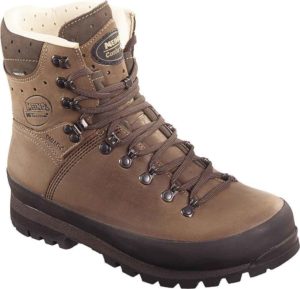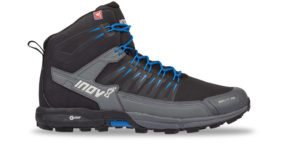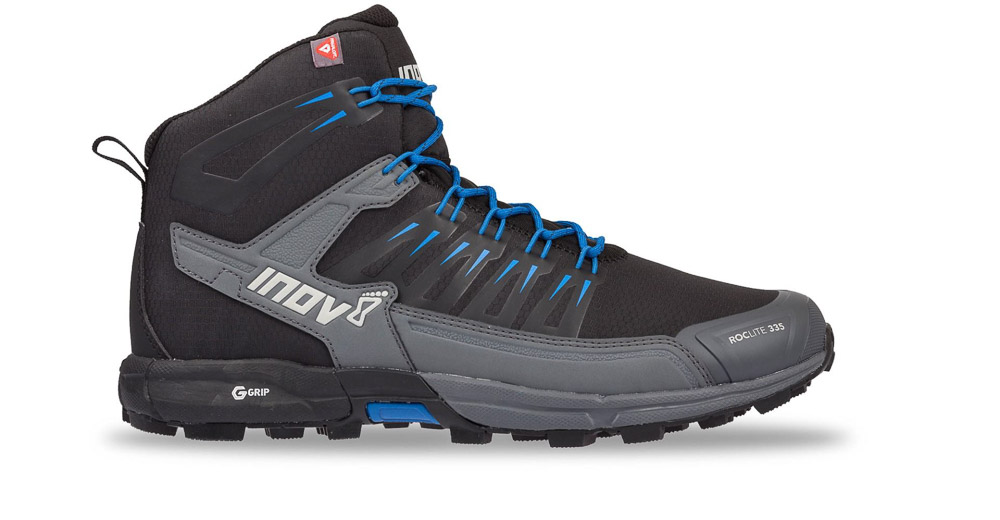Shoes or boots for walking? The bottom line is that there’s no right answer, just personal preference, but plenty of confusion mostly centred around ‘stability’ and ‘ankle support’.
Traditional hillwalkers have always favoured boots – often big, stiff clumpy ones – meanwhile odd, scrawny fellrunners in alarmingly split shorts covered the same ground in minimalist running shoes. So what’s going on and why would you choose either boots or shoes for hill and mountain walking?
Lighter is righter
People sometimes come up with mad calculations about how much work is saved wearing lightweight footwear generally. Put those to one side though, and lightweight footwear simply feels more nimble and less tiring to wear. It’s one of the reasons that modern outdoor footwear brands have focussed on making lighter and lighter boots and shoes. The bottom line though is that shoes are inherently lighter than equivalent boots because you shed the weight of the ankle part of the boot.
Are boots more stable?
The big myth about boots is that they’re inherently more ‘stable’ than shoes and offer more ‘ankle support’. In all honesty, it’s a bit of a myth. To physically prevent your ankle from turning, you’d need to splint the area in a super stiff construction – think ski-boots. Any boot that does that is going to be super awkward to walk in. In fact boot manufacturers are focussed not on stiffening the ankle area at all, but finding ways of making it more flexible. That’s because stability is actually down to a combination of heel fit and hold and support in that area, something that shoes can do just as well as boots. My take is that boots feel more stable simply because they wrap around your ankle giving psychological reassurance, but also possibly providing a degree of proprioceptor feedback, the sensation that tells you where your foot is relative to your leg and helps your brain keep your ankle in line. Other stuff that makes a difference is how low to the ground your foot sits – thinner soles are more stable, try walking barefoot. Also the shape of the heel area of the sole. One that splays outwards like a pyramid at the base feels super stable, like, erm, a pyramid.
Tip: stability begins with secure ankle fit and a solid, supportive ankle cuff.
Isn’t stiffer better?|
A sort of sideline to the ankle support thing is the idea that a stiff sole unit is also inherently more stable. Again this isn’t always quite right. During our recent 3-season boot group reviews, the boots with the stiffest soles actually felt less reassuring on uneven, rocky, rubbly ground because instead of conforming to irregularities underfoot, they tended instead to pivot and see-saw. Where stiff soles do score is in offering more underfoot rock protection, which can be less tiring over a long day on pointy rubble. At the other end of the scale, massively softly cushioned Hoka One One shoes turn out to be disconcertingly good at absorbing small to medium trail irregularities simply by deforming around them. Go figure.
Tip: stiff soles stop you feeling rock strikes, but can be clumsier too.

A traditional chunky leather walking boot
So what are boots good for?
Boots do have some plus points, particularly ankle protection if you blunder through rocky ground and catch your ankle bone on a sticky-out bit wearing a trail shoe, you’ll know all about it. Similarly, boots with waterproof liners should take deeper puddles in their stride before letting the water flood in. And finally, though this isn’t something that’s widely said, shoes are a bugger for letting small stones and gravel in over the lower cuff, result, regular stops to empty the grit out. Boots do this too, of course, but the higher ankle cuffs mean it’s less frequent. Scree gaiters will stop this too, but add hassle. Boots can also be more durable, but no more so than a comparably constructed shoe.
Tip: if you’re an ankle scuffer, boots are your friends.
What sort of walker are you?
People often talk about climbers having ‘good footwork’, but the same’s true of some walkers. In really simple terms, the lighter, nimbler and more precise you are with your feet, the more likely you are to get one with lighter trail shoes and flexible, mobile ankles. Conversely, if you’re someone who doesn’t really look where they’re stepping and just relies on footwear to deal with whatever it lands on then you’re probably going to be best off with heavier, stiffer boots. What’s maybe more complicated is what comes first. If you wear light, nimble approach shoes, it’s not only easier to place feet precisely on the right hold – yes, I know that’s a climbing term, but on broken ground, walking isn’t so different – but arguably more or less essential. Conversely, if you wear heavy, traditional boots, it’s harder to be precise and light footed.
Tip: lighter footwear suits nimbler, more precise foot placements.

A lightweight mid-height boot
A happy medium?
What if you’re a traditional walker, but shoe curious? In some ways, boot brands are helping you already. Built in flexible panels in the ankle area at all levels of boots, right up to technical mountaineering footwear, are providing more ankle mobility and allowing easier, more natural movement. That said, if you’re wary of boots, but want something that’s closer to a shoe, check out ‘mids’, a sort of halfway house between shoes and boots, which offer shoe-like lightness and precision, but with a little more ankle protection than a straight shoe. They keep out stones a little more easily and reduce ankle scuffing too. Or alternatively, look at one of the more solid, traditional walking shoes for a firmer, underfoot feel.
The bottom line
As boots get lighter and more flexible in the ankle, the traditional advantages of walking and approach shoes are a little less clear, but it’s still mostly true that shoes tend to be lighter and more precise than boots, not least because they allow your ankles to move as intended. We’d also argue that although boots may feel more supportive because they wrap around your ankle, in reality it’s something of an illusion. Ultimately it’s down to personal preference, but if you’ve never tried walking in lightweight shoes, it might just be worth giving it a go – choosing light on your feet might just be the startpoint to being lighter on your feet and that’s arguably a whole load more fun.






